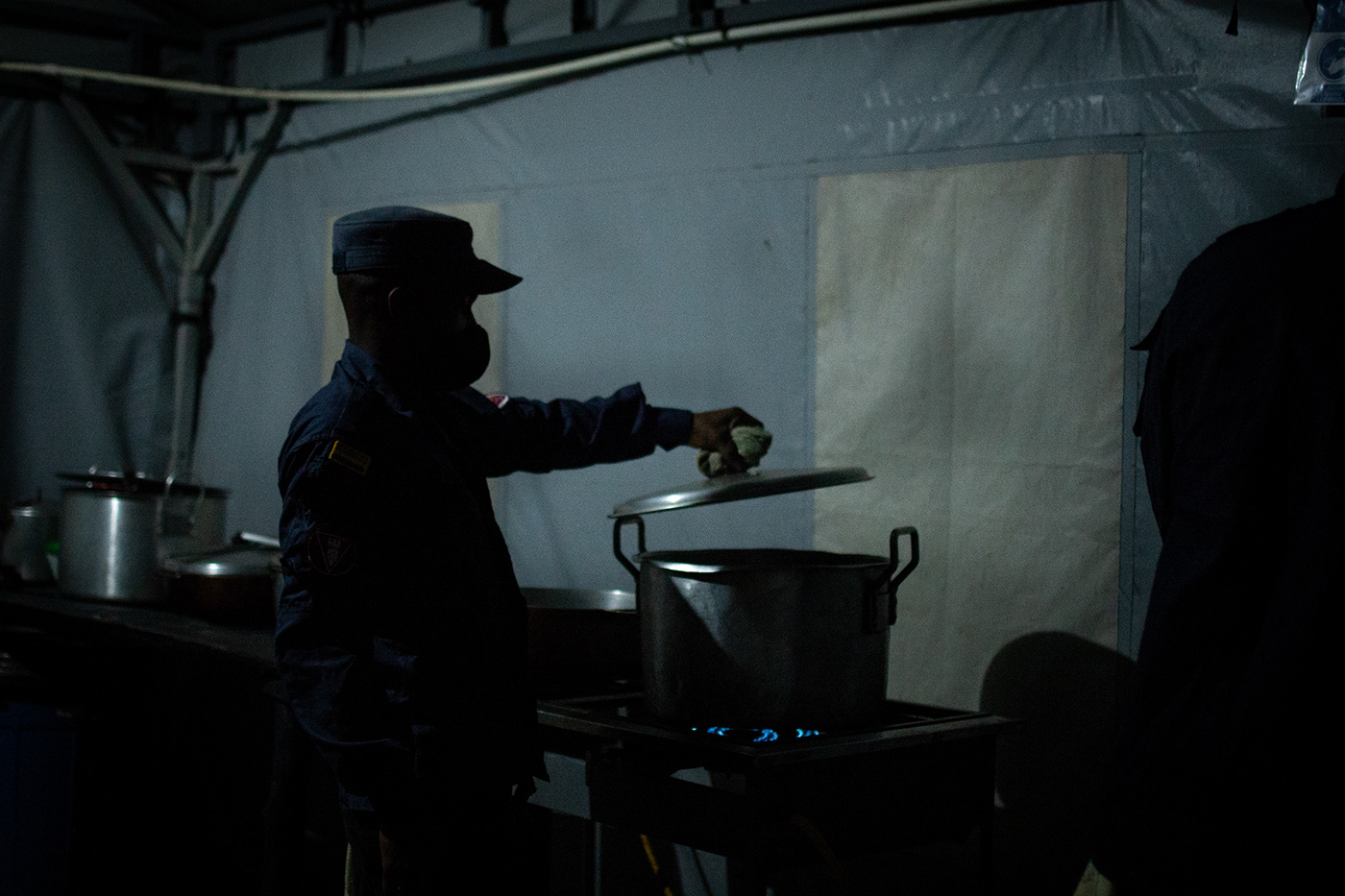
Lieutenant Guido, the only woman belonging to the Humanitarian Demining Battalion number five, makes a visit to the dangerous zone confirmed, where she executes command tasks and accompaniment of the men who carry out demining work in the Río Blanco village, a place that was previously a strategic mobility corridor for armed groups in the country

An object identical to an antipersonnel mine is destroyed with the manual demining technique, in a demonstration exercise in the area. This controlled destruction is carried out by expert personnel from the Humanitarian Demining Unit, belonging to to Battalion number five, under the direction of Lieutenant Colonel Jaiver Andrés Muñoz.

A man belonging to the Humanitarian Demining Battalion number five of the Colombian Army, carries out identification and detection of antipersonnel mines MAP, in the village of Rio Blanco, ID: APC BRDEH HUILA BARAYA 35, where men and women have been working since 2017, neutralizing eleven explosive devices in the largest confirmed dangerous area in the country, with approximately 140,000 square meters

The road known as Acerradero, on the road to Río Blanco, is demarcated with universal signage in a red danger sign, cordoned off by a stake and a rope . red showing the safe area within the danger zone. In this sector, men and women have been working since 2017, neutralizing eleven explosive devices in the largest confirmed dangerous zone in the country.

A man belonging to the Humanitarian Demining group, carries out detection and signaling of exploitive devices. The Río Blanco village, belonging to the municipality of Baraya, in the department of Huila.

A man belonging to the Humanitarian Demining Battalion number five of the Colombian Army, carries out identification and detection of antipersonnel mines MAP, in the village of Rio Blanco.

A land machine created to sweep mines with 34 hammers that hit the ground with a power of up to 900 revolutions per minute, is remotely manned by a demining soldier at a distance of up to two kilometers, making a controlled explosion in a demonstration of the mechanical demining technique at the Tolemaida Military Fort.

A group of men belonging to the Humanitarian Demining Battalion number five, in the department of Huila, Rio Blanco village, carries out a exercise of evacuation of one of the members of the group injured by an explosion by a MAP antipersonnel mine, this maneuver is carried out by the medical personnel who accompany each mission that is carried out daily in the largest confirmed dangerous area in the country.

A Belgian Malinois is trained and is part of the canine team for Humanitarian Demining. The Río Blanco village, belonging to the municipality of Baraya, in the department of Huila, was a strategic corridor for the mobility of armed groups before the signing of the Peace Agreement in 2016, and it is in this place where the Battalion of Engineers of Humanitarian Demining No. 5 has deployed a group of its best men to carry out work

A man belonging to the Humanitarian Demining group, carries out detection and signaling of exploitive devices. The Río Blanco village, belonging to the municipality of Baraya, in the department of Huila.





The recovery of territories for the peasants is the mission of the National Army of Colombia and its Humanitarian Demining group
Colombia has been marked by violence for more than a decade and despite the attempts to put a stop to the events of the past added to the Peace Agreement signed in 2016, today the numbers of victims of Antipersonnel Mines continue to worry the country.
In April 2020, the International Committee of the Red Cross reported that at least 118 people in Colombia were victims of Antipersonnel Mines (MAP) and explosive devices during the first quarter of the year, almost double that in the same period of 2019, where 81 victims were registered, which indicates an increase of 45.6%. In addition to this, the Office of the High Commissioner for Peace announced that in 2016, a total of eighty-nine people were victims of the MAP, despite the fact that in that same year the Peace Agreement was signed with the extinct FARC guerrilla.
To carry out the Humanitarian Demining process, it is necessary to give continuity to the regulations that include a series of activities that include the elimination of explosive devices, technical studies, mapping, cleaning, marking, documentation after the cleaning, community liaison for action against mines. and the delivery of cleared lands. Demining can be carried out by different types of organizations such as NGOs, national mine action teams, or military units and can be emergency or development, according to the International Mine Action Standards (IMAS). This is the case of the Brigade of Humanitarian Demining Engineers Number 5, under the command of Lieutenant Colonel Jaiver Andrés Muñoz Hoyos and Second Lieutenant Lizeth Guío, who together with five hundred men distributed in the departments of Putumayo and Huila, has appointed a work team in the largest confirmed dangerous area in the country located in the Municipality of Baraya, Rio Blanco village, where eleven explosive devices have been neutralized since 2017 to date, fulfilling the mission of providing stability and security to the population by freeing it from danger.

